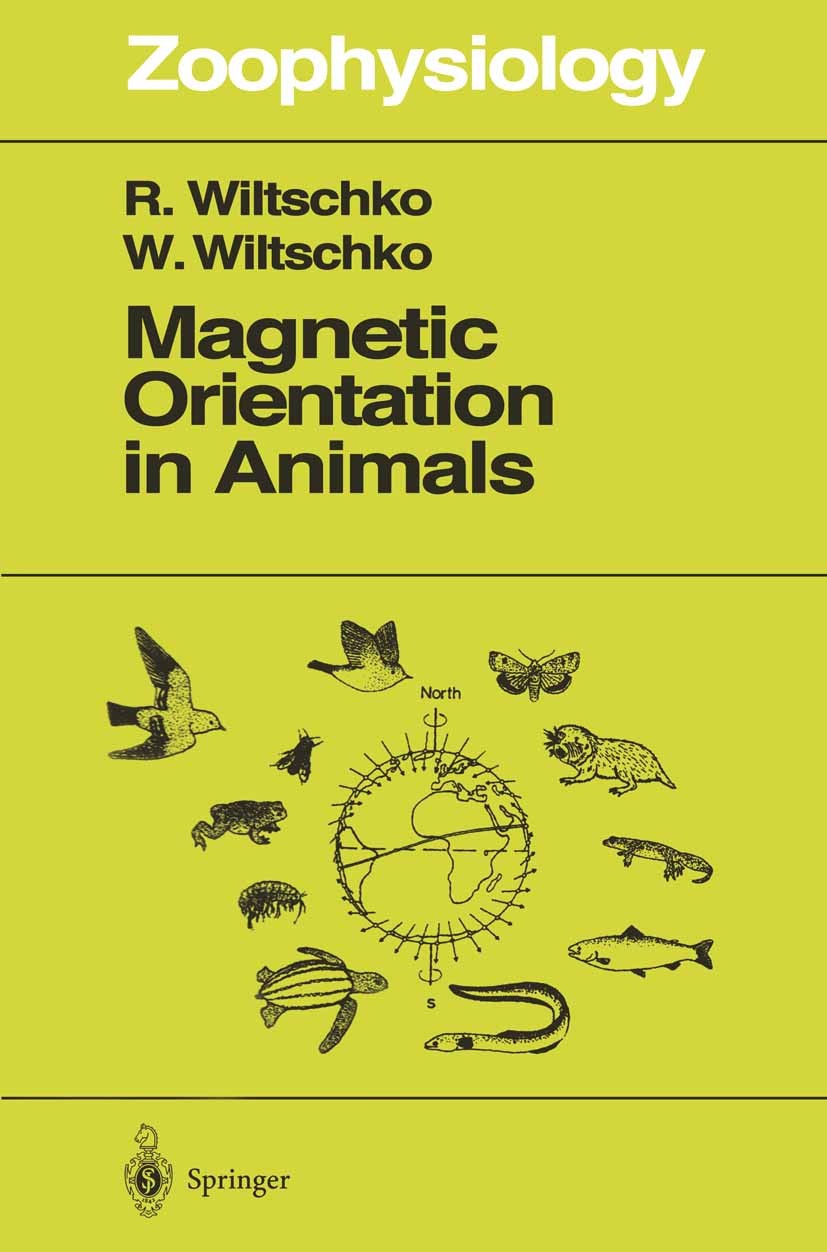| 书目名称 | Magnetic Orientation in Animals | | 编辑 | Roswitha Wiltschko,Wolfgang Wiltschko | | 视频video | http://file.papertrans.cn/622/621264/621264.mp4 | | 丛书名称 | Zoophysiology | | 图书封面 |  | | 描述 | Biological effects of magnetic fields have been studied in many animals and plants. The magnetic fields were of a wide intensity range and, as alternating fields, of a wide frequency range and of a variety of impulse shapes. Effects on the cellular level, on bio chemical processes, growth and development, interactions with physiology, sensory input, reflexes and rhythm control, to name just a few, have been reported. Numerous magnetically induced changes in behavior have also been described. Recently, the amount of literature covering biological effects of magnetic fields has been rapidly increasing. By now it has grown to such an extent that it can no longer be covered in one volume. Most reviews specialize and focus on particular aspects and/or types of fields or effects. For example, the book edited by MARET et al. (1986) gives an overview on biological effects of steady magnetic fields, MISAKIAN et al. (1993) reviewed those of extremely low frequency magnetic fields, focusing on in vitro effects. BERN HARD (1992) reported on ‘electromagnetic smog‘ in view of pos sible effects on human health and well-being, and a series of papers edited by AMEMIYA (1994) summarizes Japanese | | 出版日期 | Book 1995 | | 关键词 | Biomegnetismus; Magnetfeld; Magnetkompaß; Magnetrezeption; Orientierungsverhalten; biomangnetism; bird; inf | | 版次 | 1 | | doi | https://doi.org/10.1007/978-3-642-79749-1 | | isbn_softcover | 978-3-642-79751-4 | | isbn_ebook | 978-3-642-79749-1Series ISSN 0720-1842 | | issn_series | 0720-1842 | | copyright | Springer-Verlag Berlin Heidelberg 1995 |
The information of publication is updating

|
|
 |Archiver|手机版|小黑屋|
派博传思国际
( 京公网安备110108008328)
GMT+8, 2025-11-18 03:51
|Archiver|手机版|小黑屋|
派博传思国际
( 京公网安备110108008328)
GMT+8, 2025-11-18 03:51


